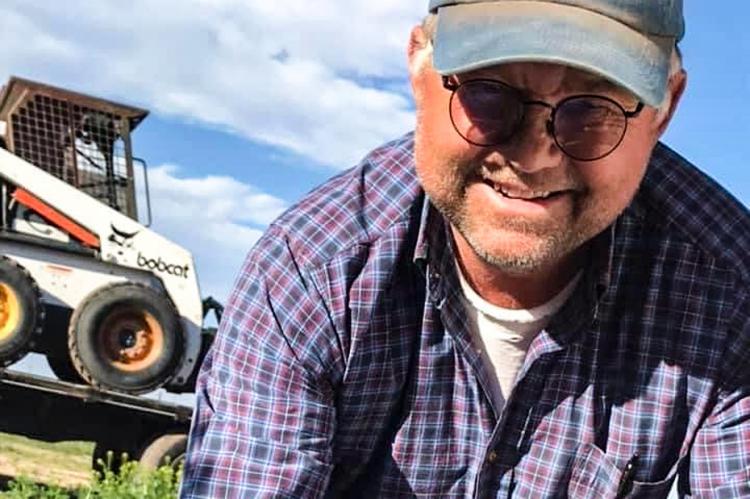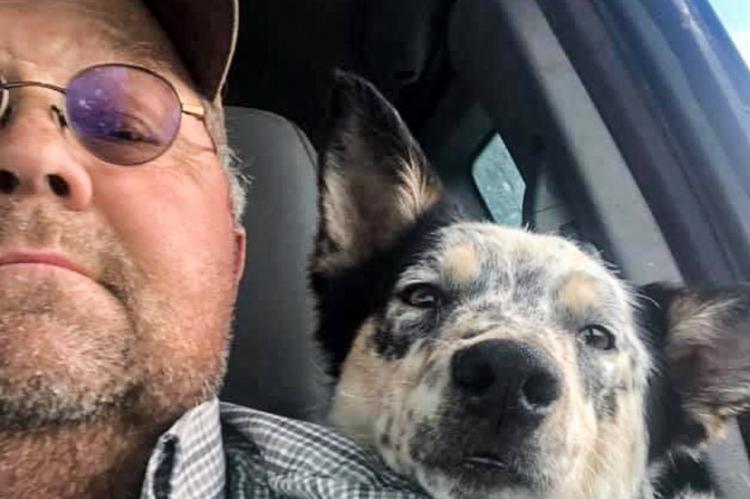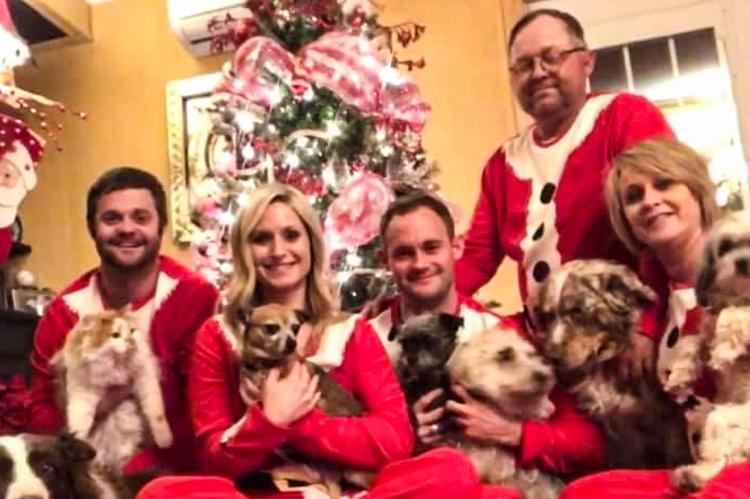Three lives: Living and dying with COVID
PART ONE
PAULA KAY HARGROVE and Ty Kent Williams fell in love on the dance floor of a Perryton club. It was a lifetime ago, back in 1986.
“We weren’t anything fancy,” Paula said. “We just loved to dance and loved each other.”
Within a year, they were married in the Catholic Church in Perryton. “Nov. 27, 1987,” she said, almost whispering. “My mom and dad’s wedding anniversary.”
Thirty-three years later, her smile beaming through the phone line, Paula said, “I’ve been with him every step of the way. Never had to leave his side.”
Never, that is, until Ty was hospitalized with COVID—first for a week in Spearman’s Hansford County Hospital, then for the rest of his life in Fort Worth’s Baylor Hospital, where he was airlifted when his kidneys began to fail.
As he boarded the plane, Ty gave his family the thumbs up. “He didn’t leave looking sick or ill,” Paula said. Even so, she went home and packed for a long stay. “I knew it was going to be a while.”
Unable to enter the hospital—which like all medical facilities, was locked down to protect patients and medical staff from the spread of COVID—Paula found the closest hotel she could, “just four minutes away,” as she told Ty every time they spoke on the phone that was their increasingly tentative connection in those last few agonizing days.
Ty ended up with triple pneumonia in three lobes, Paula said. “His first night there was rocky, but they called him stable. Stable is not always stable, to us.”
His condition quickly deteriorated. Even with a steady stream of 100 percent oxygen, administered by nasal cannula, he struggled to breathe. Acidotic delirium intermittently blurred reality.
“Where are you, Paula? Why haven’t you come to see me?” Ty would ask.
“Because I can’t come, honey,” she said. “I’m four minutes away. You know I’m right there with you.”
Then she would remind him to look at the photographs—the ones she took to Walmart and had printed—of Ty’s mom and dad; of their sons, Taylor and Tucker; of their foster granddaughter; and the “big old canvas” of Paula and Ty together. “Look at that picture of us,” she would tell him. “You wouldn’t believe the smile on his face when he saw those pictures.”
Ty was no stranger to hospitals. At age 9, he had been diagnosed with Type 1 diabetes. There is no cure for Type 1 diabetes in children. It can only be managed. “He went on about his life,” Paula said. “He took shots and went on, just did what he was supposed to do.”
“The day he asked me to marry him,” Paula said, “I went and told my mom. She started crying. She knew what diabetes was. We’ve been through hell and back with diabetes, but I wouldn’t change a thing.”
IN THE COURSE of their life together, Paula was always by Ty’s side as he endured three major surgeries to save his vision from diabetic retinopathy, and as he recovered from the long-awaited kidney and pancreas transplants that spared him a lifetime of dialysis.
“With diabetes, Ty always said, ‘You either control it, or it’s going to control you,’” she remembered, and after a pause, added, “That’s how he felt about COVID.”
Because of the diabetes, Ty was considered immuno-compromised—a bright-red flag in the age of coronavirus. Last March, when the first COVID cases were reported in Texas, Paula said they were both scared to death. Ty’s transplant doctor told him to go home, stay away.
“Ty listened,” she said. “Thank God he had a job outside with cattle.”
But by August, Paula said, “We all got lax and were thinking, ‘Gosh dang, guys. We’re all going to have to live this way forever.’”
Having worked for years as a gymnastics teacher, Paula was ready to dive back in. “I had 85 to 90 kids this year,” she said. “My son’s 30th birthday was Sept. 25. Ty’s was Sept. 6. I had things planned.”
Ty was getting restless, too. He looked at Paula and said, “We’ve got to go on with life. Church needs to come back. I won’t be stupid, but we’ve got to go on.”
Paula resumed her gymnastics class, and threw their son, Taylor, a surprise birthday party. Five days later, she tested positive for COVID. “I cried when they told me,” she remembers. “It scared me—not for myself, but for my family.”
Ty’s doctor was blunt. “He told Ty to get his ass out of our house,” Paula said. “Ty said no.”
For the first three days, Paula had every symptom. A headache that went off the top of her head into her neck, and a fever. She totally lost her sense of smell and taste. The headache left, finally, and was followed by diarrhea.
“By my 10th day,” Paula said, “I felt pretty good. It was pretty outside. I took off walking, but I had no energy. It was an exhaustion I can’t even explain. I could hardly put one foot in front of the other. I was thick-headed, in a different world.”
Paula returned to work on day 15, but the next day, had a headache that made her vomit for six hours. “If I moved,” she said, “I was over the toilet.”
On Oct. 1, Ty was diagnosed with COVID, too. Paula’s silence on the speakerphone, as she remembered that moment, was broken only by a muffled sob, and these words: “I don’t know what I was thinking.”
“Ty has always beaten everything,” Paula said.
TWENTY-EIGHT DAYS after testing positive for COVID, Ty succumbed to the virus alone in his hospital room. He died despite the attentive care of his nurses, who frequently updated Paula on his condition by phone. He died despite the fighting words of one nurse—Bobbi Joe, a rancher’s daughter herself—who said, “I told Ty what we’re going to do. I know he’s a cowboy. He’s going to kick this, but not by lying in bed.”
Bobbi Jo voluntarily returned to duty to be with Ty when his condition deteriorated. She stayed four nights. She gave him a bath and combed his hair. She got him to eat three Ritz crackers.
The last night Bobbie Jo was there, she told Paula, “I’m going to be real honest with you. That’s the kind of nurse I am,” and said she was going to talk to Ty about intubation— something he had already refused, saying it was a death sentence.
“It can save your life,” Paula pleaded with her husband the next day on the phone, and Ty finally relented.
But later, confiding in her brother, Mike Hargrove, a former Major League baseball player and now an advisor with the Cleveland Indians, Paula said, “There just isn’t any more good news.”
“I know the small victories don’t seem very big,” Mike responded. “Sometimes, you’ve got to take a win, even if it doesn’t feel like a win. And hey, that first inning was a win.”
At 8:15 am on Oct. 29, Paula called her husband. “Morning, Ty Kent. I love you. It snowed this morning in Gruver.”
Less than an hour later, she got the call to come in to the hospital.
TODAY, PAULA FINDS comfort in the memory of one of their final conversations. “He called me late one night and said, ‘Paula, I can’t do this. I’ve got to have you. I can’t breathe, and I’m scared.’ I told him, ‘Ty, I’ve got you.’” Paula asked Ty to close his eyes and
Paula asked Ty to close his eyes and breathe with her. “I’m holding your hand,” she said. “We’re walking on the beach. Feel that sunshine on your face? Feel the water on our ankles. When that water comes in, we take a deep breath. And when it goes out….”
“We did that for 10-15 minutes,” she said, then laughed and admitted, “We’ve never been to the beach.”
“We loved hard. We loved big. We fought big and we played big,” she remembered. “We live in a trailer house, a double-wide. It was nothing special. But we built a beautiful porch right after his transplant. We always played cards out there…Kings Corner, Gin Rummy. If I got him to drink two or three beers, I could get him to dance with me on the back porch.”
“That’s where I do my Bible study, now.”
“He had always beaten everything,” Paula said through tears. “That’s why I kept asking, ‘How did we get here?’ He was so strong. He was so happy. He had the best smile,” she paused, and added, laughing, “…and the worst temper.”
“How did we get here?” she asked again, then answered her own question. “This virus is a monster.”
EDITOR’S NOTE: The second and final part of Three lives: Living and dying with COVID, will be published in next week’s edition of The Record, and will feature our interviews with Doug Benge, who survived COVID-19, and with Jenny Wilburn Frazier, whose father, Bob Wilburn, is a COVID-19 victim.




